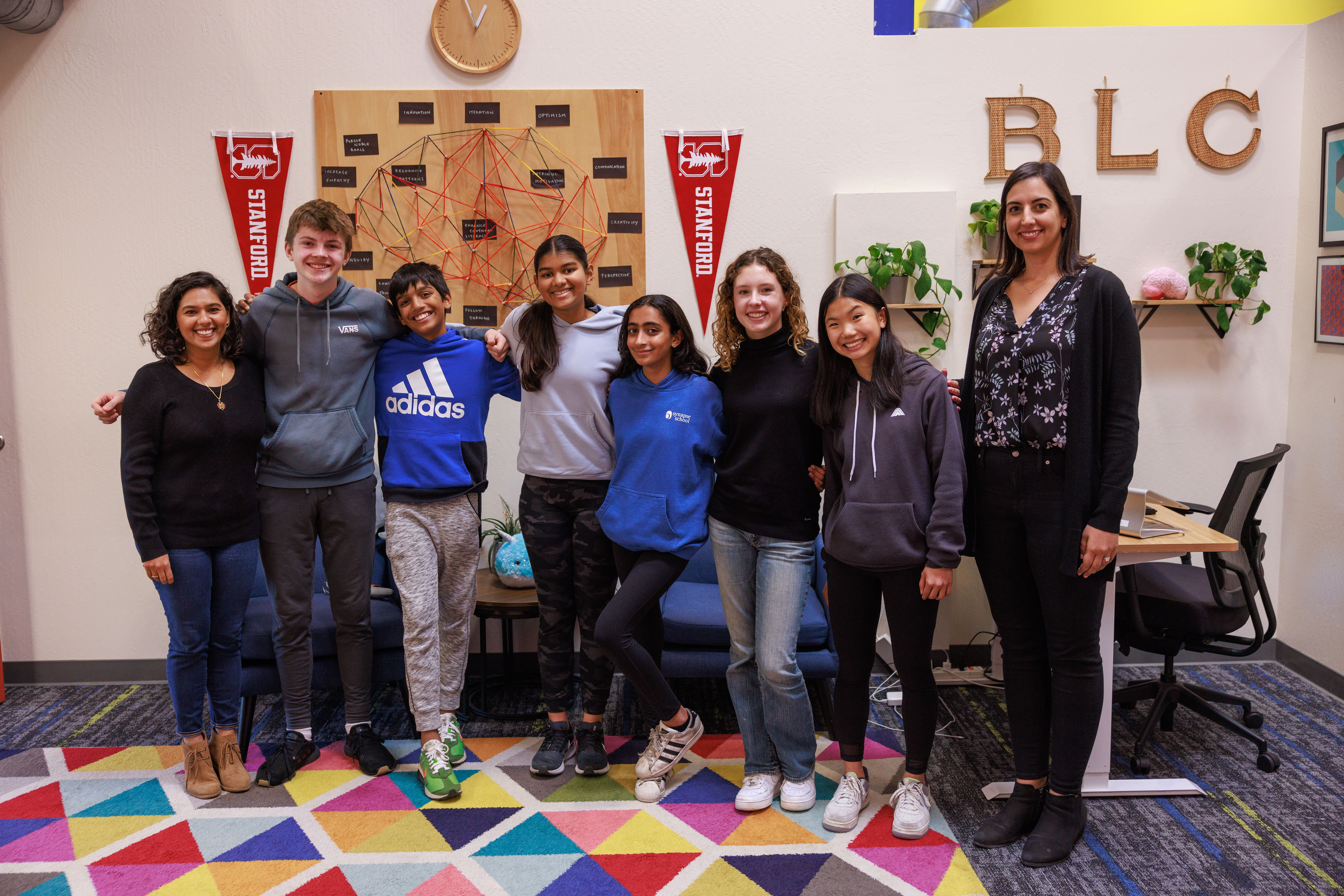Through the program, about 20 Synapse students have been supported in developing research projects over the past two years – which is how Rose and Walker’s work ended up at the 2023 conference of the Flux Society for Developmental Cognitive Neuroscience, an influential forum for professional scientists, graduate and postdoctoral students, physicians, and educators.
“Initially, we just thought it might be interesting for the middle school students to get an idea of the scientific method, the type of science we do, and what the field is all about,” said Radhika Gosavi, a trained scientist and associate director of the Brainwave Learning Center, who leads the research assistant program. “But it’s grown into so much more.”
Rose, for one, who has dyslexia, was curious about how a dyslexic brain might interpret information differently from a neurotypical one. As a seventh grader he started exploring studies on audiovisual integration – how the brain combines sounds and images, which early research suggests may differ between dyslexic and neurotypical thinkers. He worked closely with Gosavi to understand the scientific literature, shape research questions, and design an EEG study.
Then Rose and Walker, who joined the program the following year, were introduced to Lindsey Hasak, a GSE doctoral candidate whose research focuses on audiovisual integration in the process of reading. “I’d worked on the proof of concept for a few years of my PhD with neurotypical adults, and because of the students’ interest, we were able to expand the scope of the study,” Hasak said.
Rose and Walker recruited a study sample of fellow students with and without dyslexia, learned all the steps involved in an EEG experiment, and carried out the research using ethical protocols. The Brainwave Learning Center team worked with them to analyze the data, which shows differences in brain activity between those with and without dyslexia.


